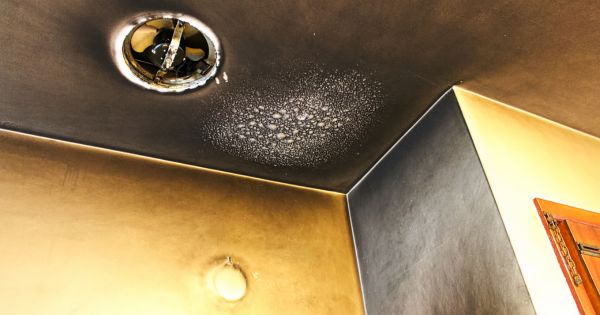How to Clean Smoke Damage on the Walls and Ceiling
Smoke damage can be a challenging consequence of a fire incident, leaving your walls and ceiling discolored and dirty. Knowing how to clean smoke damage effectively can help restore your home to its pre-fire condition. In this guide, we’ll walk you through the process step by step, from preparing for cleaning to seeking professional assistance. If you need expert help with your Boston fire damage restoration, we’ve got you covered.
Removing Soot before Professionals Arrive
While attempting to remove soot yourself is an option, seeking professional help is often a better solution to ensure thorough removal and prevent any areas from being overlooked. However, if you still feel inclined to take action before professionals arrive, there are a few steps you can take to mitigate the damage:
- Safety First: Ensure the area is safe to enter. Use appropriate protective gear such as gloves, masks, and goggles.
- Ventilation: Open windows and doors to allow fresh air circulation and improve ventilation.
- Avoid Aggravating the Damage: Refrain from touching or wiping surfaces as this can smear soot and worsen the damage.
- Assess the Damage: Take note of the extent of the smoke damage to determine if it’s something you can handle yourself or if professional assistance is required.
Materials for Removing Soot: DIY
If you still prefer DIY soot removal, gathering the right materials is crucial for effective smoke damage cleanup. You’ll need:
- Clean cloths or sponges
- Mild detergent or specialized smoke damage cleaner
- Bucket of warm water
- Rubber gloves
- Scrub brush
- A vacuum cleaner with a brush attachment
- Vinegar solution (for odor removal)
- Baking soda (for odor removal)
- Activated Charcoal (for odor removal)
- Coffee Grounds (for odor removal)
How to Clean Smoke Damage on Walls and Ceiling: DIY
Smoke can leave behind stubborn stains and odors, making the cleanup process challenging but essential for returning your living space to its pre-fire condition. You can follow some practical steps and tips to remove soot from both walls and ceilings, ensuring a thorough and successful restoration process.
Cleaning Smoke Damage on Walls

Walls are often porous surfaces, which means they can absorb smoke particles and odors, requiring special attention during cleanup. Follow these steps to clean smoke damage on walls safely.
- Prepare the Surface: Dust walls with a dry cloth or vacuum with a brush attachment to remove loose soot and dirt.
- Test Clean: Before moving forward, test a small, less noticeable area with your cleaning solution to ensure it doesn’t cause further damage.
- Clean with Detergent: Mix mild detergent with warm water in a bucket. Use a clean cloth or sponge to gently scrub the walls in a circular motion. Work in sections, rinsing the cloth frequently.
- Rinse and Dry: Once the soot is removed, rinse the walls with clean water and dry thoroughly with a clean cloth.
Cleaning Smoke Damage on Ceiling
Smoke residue can accumulate on the ceiling, leaving dark stains and lingering odors. Proper cleaning techniques are essential to ensure thorough removal without causing further damage. Here’s how to clean smoke damage on ceilings while maintaining the integrity of the surface.
- Approach with Caution: Cleaning ceilings can be more challenging. Use a sturdy step ladder and be cautious to prevent accidents.
- Dry Cleaning: For light soot, try dry cleaning methods such as a dry sponge or vacuum with a brush attachment.
- Wet Cleaning: For heavier soot, use the same detergent solution as on walls, applying it gently with a sponge. Avoid saturating the ceiling since excessive moisture can cause damage.
- Dry and Inspect: After cleaning, ensure the ceiling is completely dry and inspect for any remaining soot or damage.
DIY Odor Removal
Smoke damage not only leaves visible stains but also stubborn odors that can linger long after the cleanup. If you’re looking to tackle odor removal yourself, here are some DIY methods you can try:
- Vinegar Solution: Mix equal parts of white vinegar and water in a spray bottle. Lightly mist the affected areas with the solution and allow it to air dry. Vinegar is known for its ability to neutralize odors.
- Baking Soda: Place bowls of baking soda around the affected rooms to absorb odors. You can also sprinkle baking soda directly on carpets, upholstery, and other porous surfaces, let it sit for several hours, and then vacuum it up.
- Activated Charcoal: Place activated charcoal briquettes or granules in bowls around the room to absorb odors. Activated charcoal is highly porous and can effectively trap odorous molecules.
- Coffee Grounds: Spread dry coffee grounds on baking sheets and place them in the affected rooms. Coffee grounds can help absorb and neutralize smoke odors.
- Air Purifiers: Invest in high-quality air purifiers with HEPA filters to help remove smoke particles and odors from the air. Run the purifiers continuously in the affected areas for optimal results.
Seeking Professional Help
If the smoke damage is extensive or if you’re unsure about tackling the cleanup yourself, it’s best to seek professional assistance. Companies certified by the Institute of Inspection Cleaning and Restoration Certification (IICRC) have the expertise and equipment to handle smoke damage.
Reach Out to A.W. Puma Restoration & Remodeling for Effective Soot or Smoke Damage Removal
Knowing how to clean smoke damage on walls and ceilings is essential for restoring your home after a fire incident. By following these steps and precautions, you can remove soot and mitigate the damage to some extent. If in doubt, don’t hesitate to seek professional help from certified restoration experts. At A.W. Puma Restoration & Remodeling, we offer a full package of services, from smoke odors and soot removal to complete smoke damage remediation and deodorization. Contact us today at (508) 300-9747 or by filling out the contact form on our website. We offer free estimates, so don’t miss out on it!





